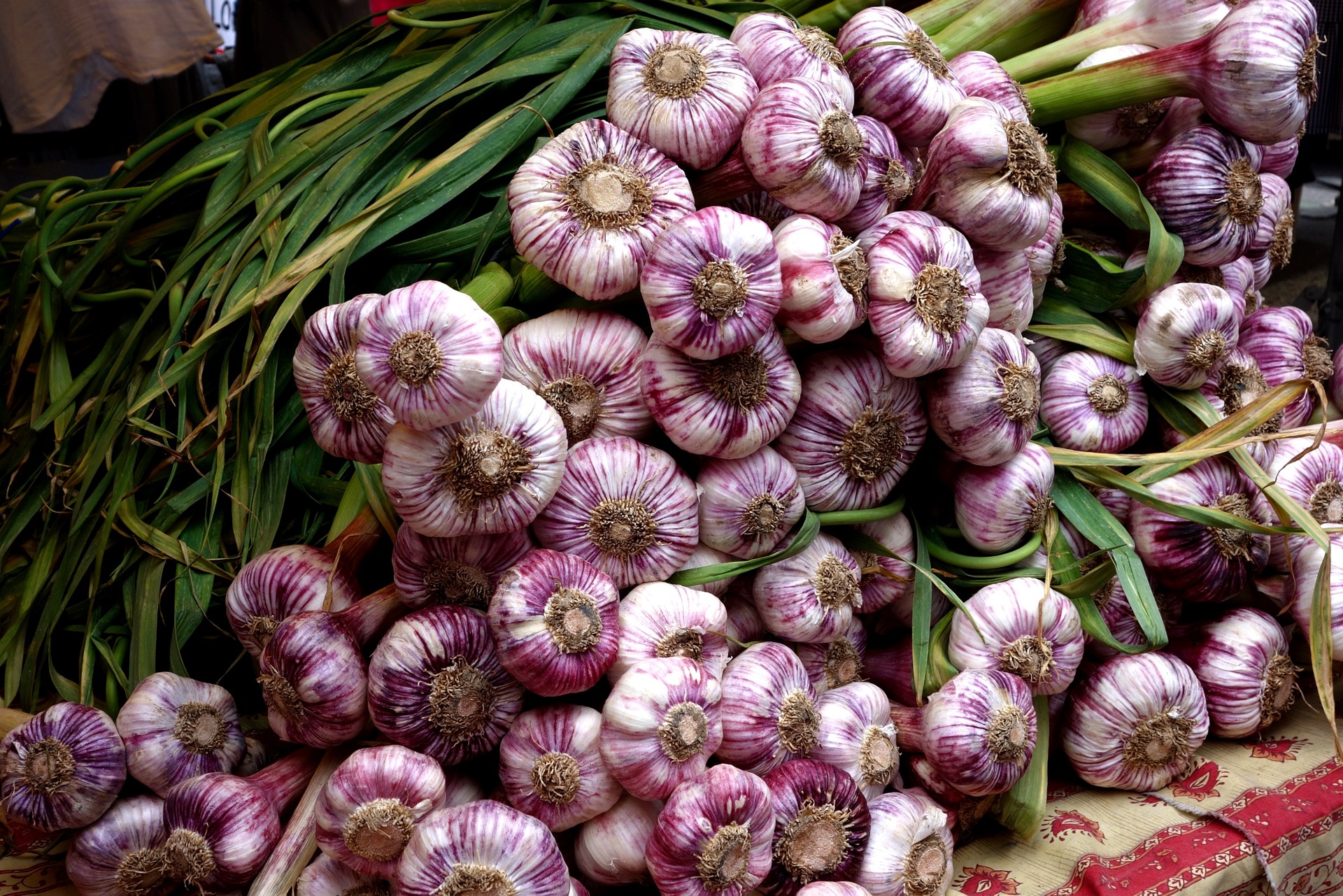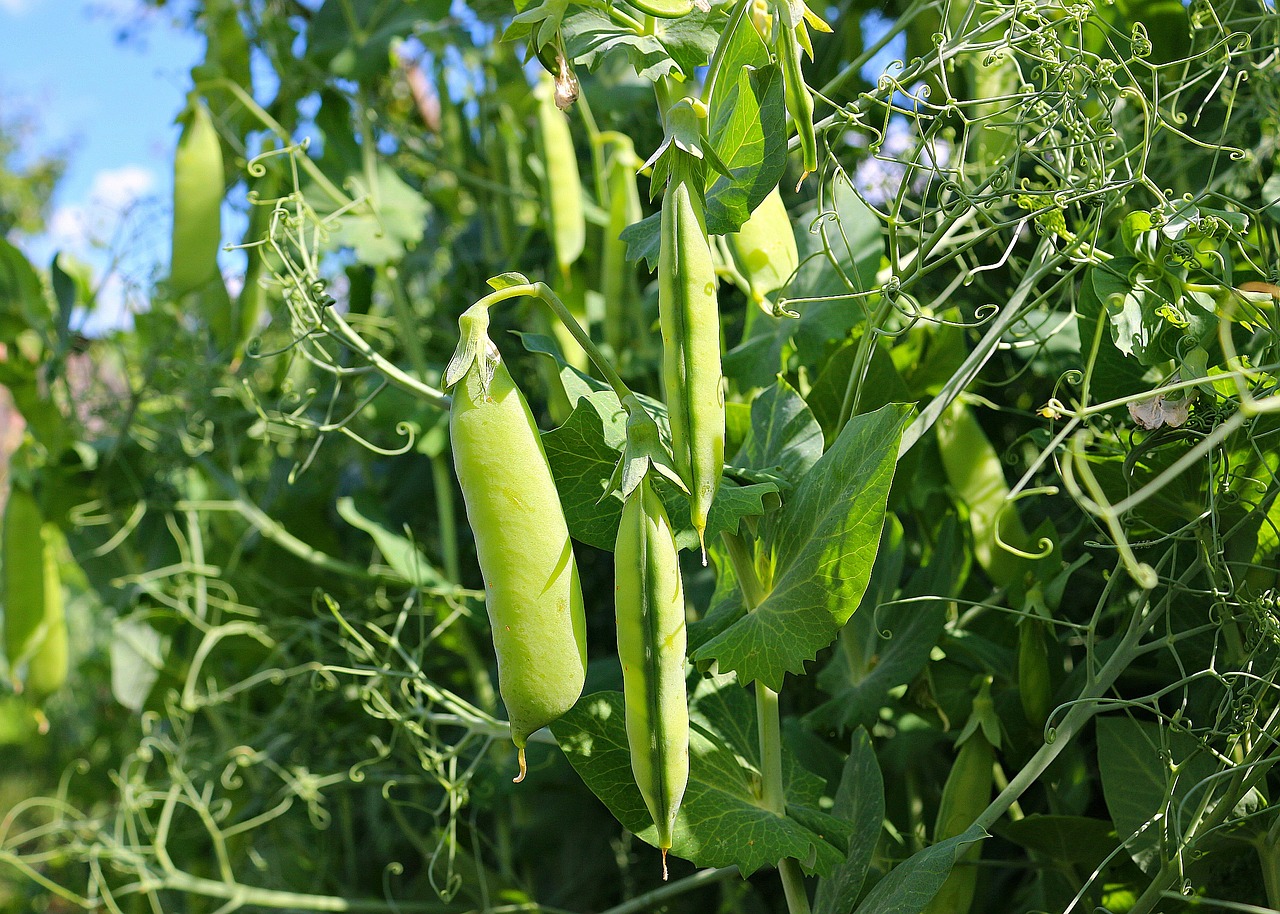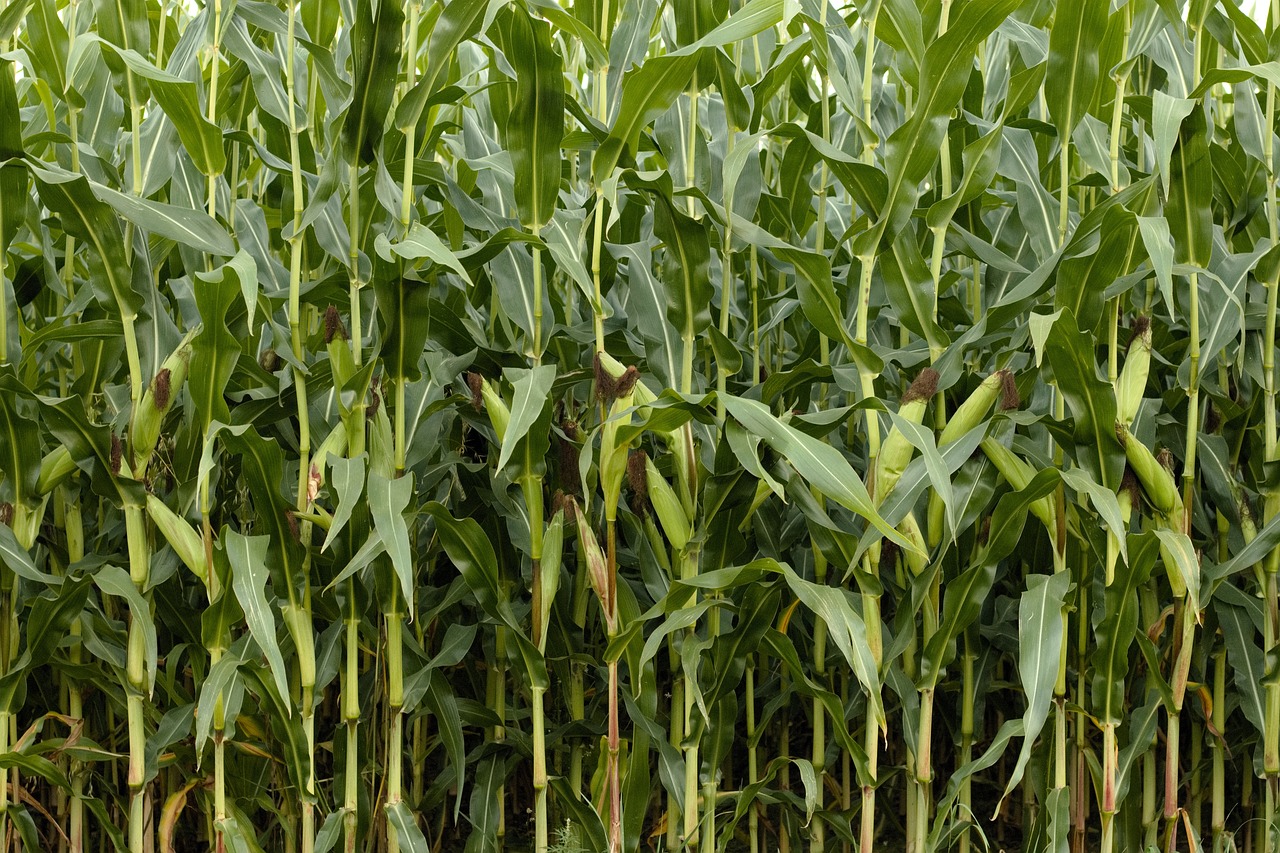Garlic is a widely used ingredient in many dishes and soups, due to the sweet, buttery, onion-like flavor that it imparts to foods when cooked, making it a valuable addition to a home garden.
To harvest sizable bulbs, grow garlic in well draining soil under full sun, and take care not to over water the bulbs towards harvest. Also check your area’s hardiness zone to determine the best varieties to grow in your region.
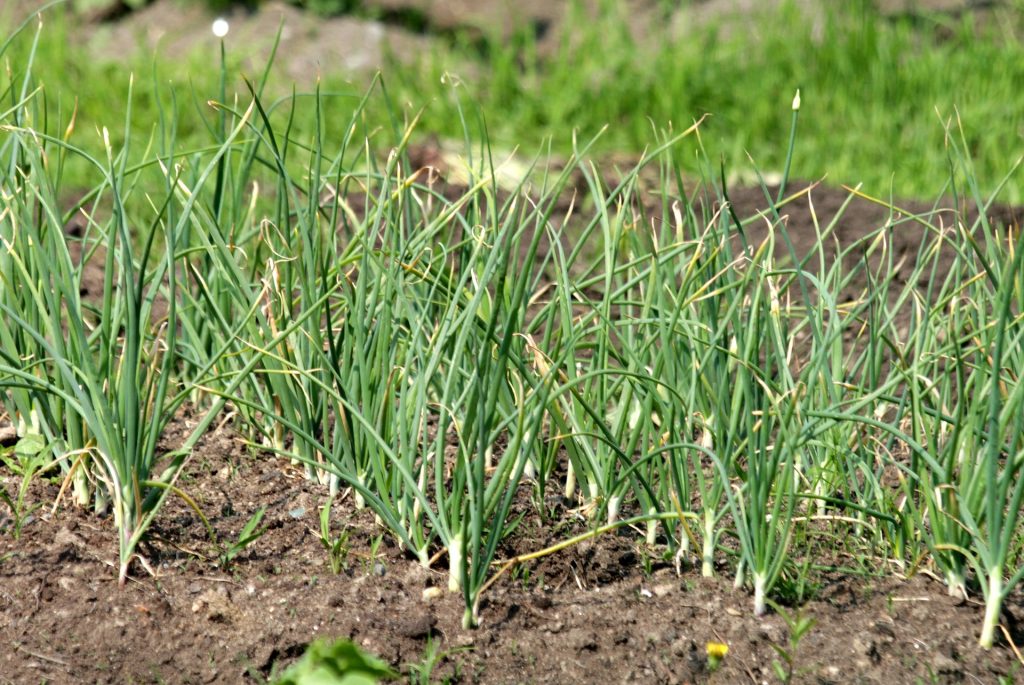
Description
Garlic is a bulb forming plant belonging to the amaryllis family Amaryllidaceae and native to Asia and Northeastern Iran. It is a close relative to shallots, leeks, chives, onions and Chinese onions.
Garlic plants grow long leaves arising from a stem connected to the bulb. The bulb is covered with a membranous skin and is divided into sections called cloves. A garlic bulb can have up to 12 cloves or more.
Garlic is usually eaten cooked and has a strong onion-like flavor. It is used as a spice in meat and fish soups and other dishes.
| Botanical name: Allium sativum | Propagation: Bulb |
| Common name: Garlic | Soil type: Sandy loam |
| Family: Amaryllidaceae | Soil pH: 6.5-6.7 |
| Plant type: Annual | Temperature: 550F-750F(13-24)0C |
| Hardiness zones: 4-9 (USDA) | Light: Full sun |
| Mature size: Up to 2 ft tall | Spacing: 1 ft between plants |
| Flower color: Lavender, purple, white | Pollination: Bees, butterflies and other insects |
| Leaf color: Green | |
| Time to maturity: 7-9 months | |
| Native area: Asia |
Types of Garlic
Garlic is divided into two types; hard neck and soft neck garlic.
Hard neck garlic grows a central woody stalk and a green curly stalk known as a scape. Bulbs take a longer time to mature but grow bigger than soft neck garlic bulbs when grown in optimum conditions.
Hard neck garlic grows well in cold temperatures and has more flavor compared to soft neck varieties.
Varieties of hard neck garlic include Asiatic hard neck, Creole, Porcelain, Marble purple stripe, Racambole, Turban and Glazed purple stripe.
Soft neck garlic grows a clove instead of a woody stalk and produces more cloves than hard neck garlic.
Soft neck garlic is the type that can be braided for storage and an attractive display.
Varieties of soft neck garlic include Artichoke and Silver skin.
Temperature requirements
Garlic grows best at temperatures between 550F-750F (13-24)0C. Garlic is a winter hardy plant and can tolerate temperatures of up to -300F when gown well. Extremely high temperatures result into poor bulb development.
Soil requirements
Garlic is adapted to growing in various soil types but for optimum growth, grow in well-draining sandy loam soil that is rich in organic matter, with pH of 6.5-6.7. Avoid planting garlic in clay soil as it leads to poor bulb development.
Sun/ Light requirements
Garlic should be grown in an area that receives full sun (at least 6-8 hours of sunlight per day). Plants grown in shaded areas are spindly and produce tiny bulbs.
When to plant Garlic
Plant garlic during fall, 2-3 weeks before the first hard freeze in your area. This is usually around mid-October in temperate regions.
It is essential to plant garlic at the right time to avoid losses. Planting too early causes plants to develop a lot of top growth when it is still warm and when frost comes, it can damage growth up to the bulb, causing loss.
When planted too late, there is not enough time for the plants to develop a strong root structure that can withstand the cold.
In tropical and subtropical regions, plant garlic at the beginning of the rainy season.
Site preparation and planting
Prepare your site by removing existing vegetation, large stones and perennial weeds.
Till the site to make it smooth.
Using a trowel, dig furrows that are 2in. deep and 1ft. apart.
Besides furrowing, you can create 2in. holes with your finger while taking into consideration the above required spacing.
Do not add fertilizer at this point as it may stimulate vigorous shoot growth which may damage plants during the winter freeze.
Separate cloves from a head of garlic carefully so as not to damage them.
Choose big-sized cloves to plant as they produce big sized bulbs. They should not have holes or signs of disease. Do not remove paper wrappers from the garlic cloves.
Plant cloves, cover with soil and water to trap in moisture.
Apply a layer of mulch in form of dry grass or dry leaves to retain moisture and control weed growth.
Care and maintenance
Watering: Garlic plants will need to be watered especially during the dry season. Water once every week if it does not rain. During the rainy season, additional watering is not required.
As garlic plants continue to grow, even water requirements reduce. When stalks start to dry, reduce watering to once every two weeks if there is no rainfall.
Cut off watering 3 weeks to harvest time to reduce risk of bulbs being attacked by fungus or rotting.
Mulching: Mulching helps to retain water in the soil and control weed growth. Towards freezing winter conditions, apply a 6in. layer of mulch to protect plants from the cold freeze. In non-freezing conditions, a 2-4in. layer of mulch is sufficient.
Fertilizing: Apply a nitrogen-based fertilizer to enhance foliar growth during spring or add a 1-2in. layer of organic manure in form of compost or rotted animal manure.
Harvesting, curing and storage
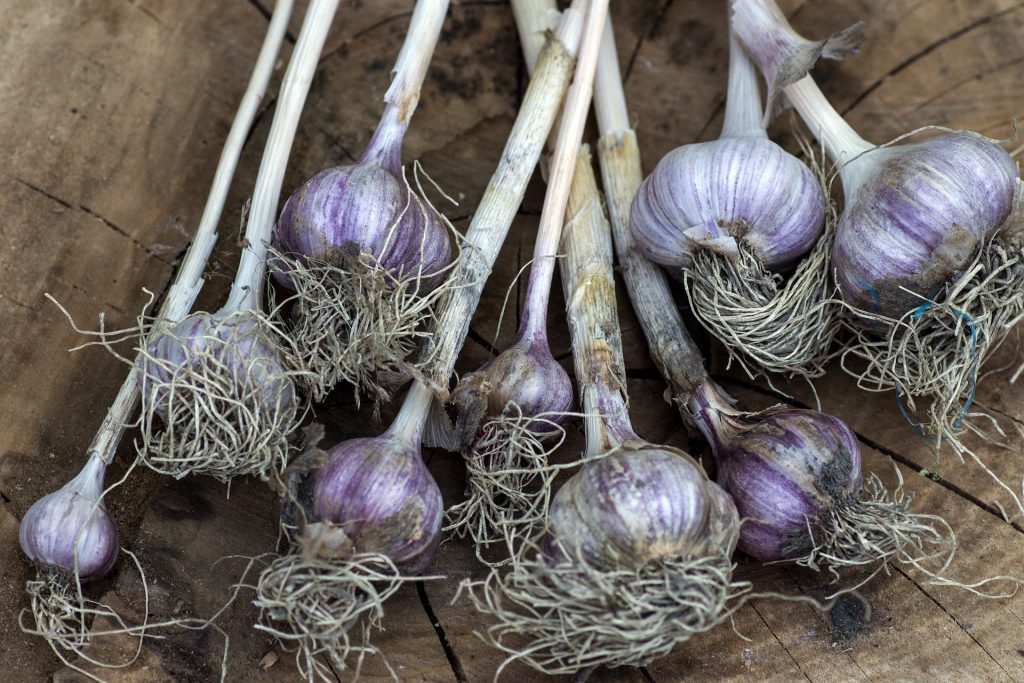
When the first four leaves of the garlic plants from the bottom have browned, then the plants are ready for harvest. The leaves will soon weaken and start to fall over. This happens around 7-9 months after planting, depending on variety.
Dig up one plant to check for maturity. If it has attained required size, then you can proceed and dig up the rest of the plants.
To harvest, loosen soil around plants with a trowel or a garden fork, and pull-out plants from the soil using hands. If soil is not loosened prior to harvesting, the stalks may break from the bulbs.
After pulling out the plants, do not remove leaves or roots in order to lengthen their shelf life.
Shake off the dirt from the plants but do not rinse them with water.
Scapes of hard neck garlic should be harvested when they have just started to curl. They have a mild flavor and can be a good substitute for spring onions. If scapes are left to flower, this may reduce the size of the bulb because energy is spent on flower and seed formation, which would be channeled to bulb maturation.

Curing: Involves storing garlic in a well-ventilated area in racks, out of direct sunlight so that it toughens and lasts longer under storage.
Lay garlic on racks for weeks until each head is dry and papery.
When they are ready, you can cut off stalks and roots and compost them. Soft neck garlic stalks can be left intact for braiding.
Storage: Store garlic at room temperature.

Best companion plants to grow with garlic
- Cabbage
- Carrots
- Spinach
- Tomatoes
- Chamomile
- Beet root
- Kale
- Dill
Plants to not grow with garlic
- Strawberries
- Leeks
- Onions
- Shallots
- Parsley
- Beans
- Asparagus
- Sage

